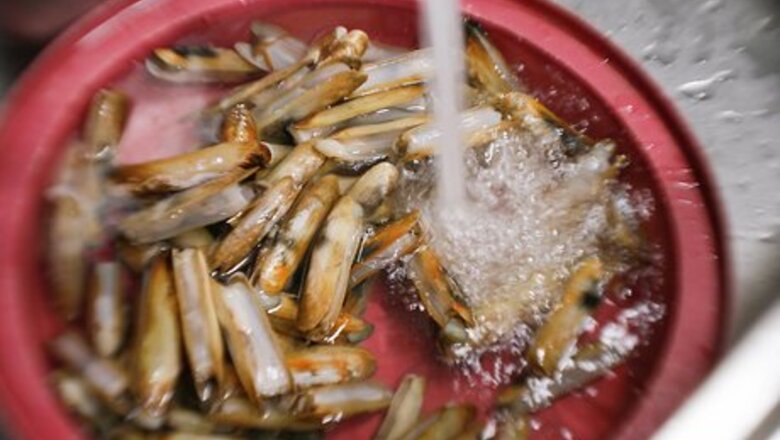
views
Removing the Shell
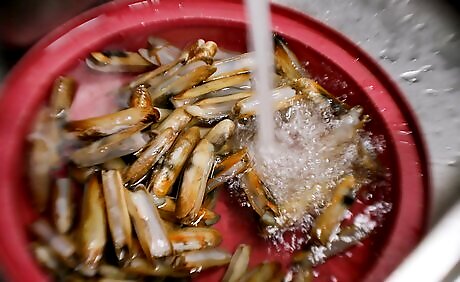
Clean the sand off of your clams. Before you get started, give your clam shells a nice scrub so that you won’t transfer any sand onto your clam meat during the unshelling. You don’t need to use any soap or cleaning product to wash off the sand. All you need is water and friction.
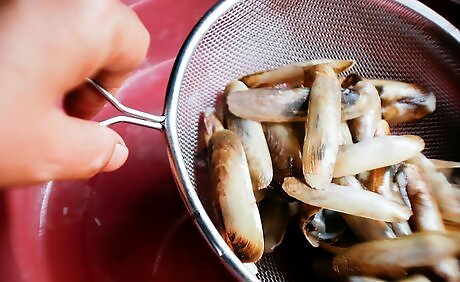
Put your clams into a colander or steamer basket that fits into a pot. If you have too many clams to put them all into the colander or steamer basket, then you can split them into batches for cleaning. Grab a few towels or oven mitts to help you safely handle your clams. If you don’t have a pot that’s large enough, then you can use a heat proof bowl.
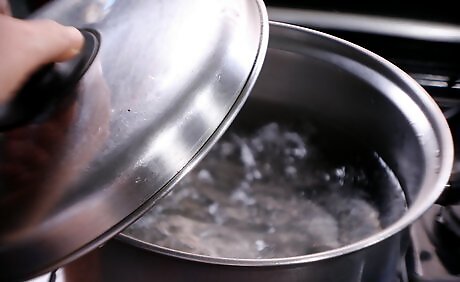
Boil a pot of water. Bring your water to a rolling boil. You can leave it in the pot for the next step, or you can pour it into your heat proof bowl if you’re using one. While the amount of water doesn’t have to be exact, it’s best to use about 1 quart (1 liter) for every 15 clams.
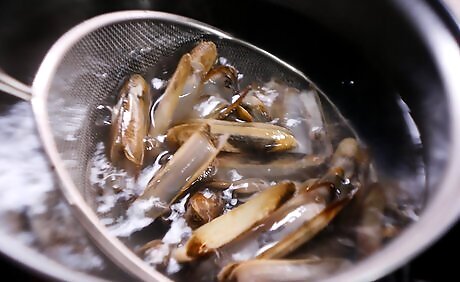
Dip the colander or steamer basket into the pot. Completely submerge your clams to get them to open their shells. While they’re in the water, gently shift the colander back and forth to encourage the clams to open.
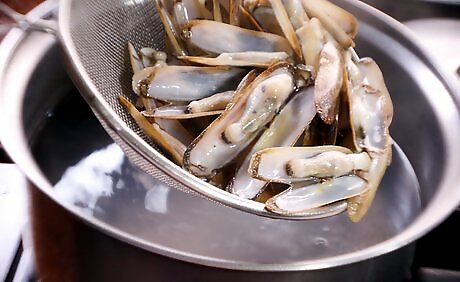
Wait 10 seconds, then remove the clams. The clams will have opened their shells with the meat exposed, but you need to cool them down quickly so that the meat doesn’t cook. Accidentally cooking the clam in the boiling water will ruin its texture and flavor. Have a bowl of cold water prepared and waiting for use before you insert the clams into the boiling water.
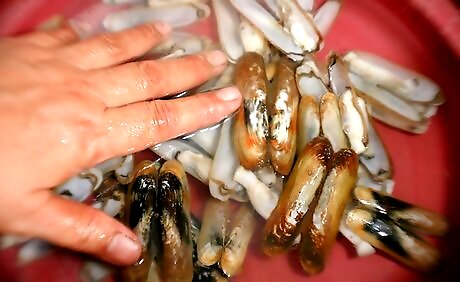
Submerge the clams in cold water. You can use either cool or ice water to chill your clams. The cold water will prevent the clams from cooking improperly. Wait until your clams are completely cool before handling them to avoid burns.
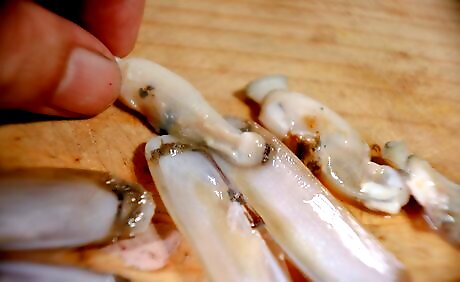
Pull the clams from the shells. Use your hands to remove the clam meat. Place the clam meat into a clean container. If the clam is not completely detached, cut its four abductor muscles with a sharp knife.
Splitting the Clam Meat
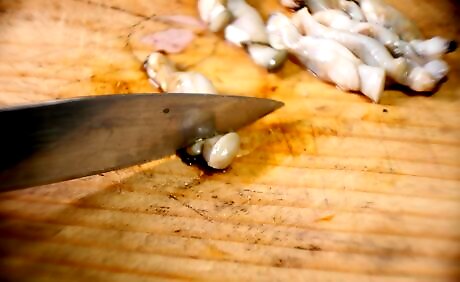
Remove the tip of the neck (the siphon). This is the tough part of the clam, so most people choose to slice it off. You will want to remove it as close to the tip as possible to preserve the meat.
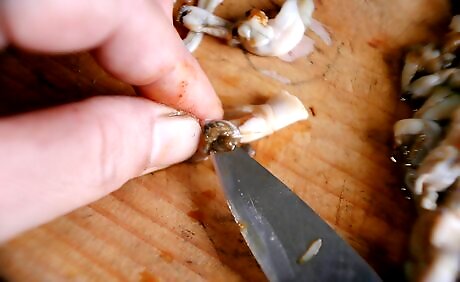
Cut a slit from the foot of the clam up to the tip of the neck. One side of the clam should have a sharp tooth-like texture that resembles a razor-blade or zipper. Follow along the razor-blade with your knife to open the meat.
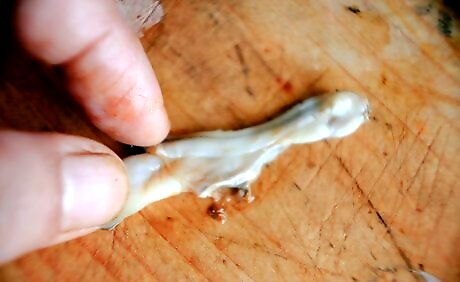
Lay your clam flat. Spread the clam to reveal its inner parts. You can lay it on a cutting board or plate so that you can easily make your cuts as you remove the inedible parts of the clam. If you are experienced in the kitchen, you may choose to hold the clam in your hand; however, doing so risks you cutting your hand. It’s best to use a hard surface instead.
Removing the Innards
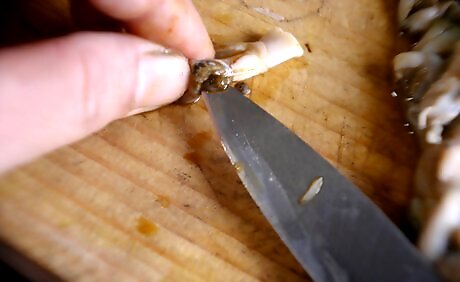
Cut off the gills. You will see the fleshy brown gills near the center of your clam. Use your knife to carefully detach them from the rest of the clam meat. Cut down below the gills and rinse thoroughly to remove any hidden sand. The gills are not dangerous to eat, but most people prefer to remove them before cooking them. The mouth of the clam, called the palp, is in the same place as the gills. You will be removing these parts together if you scrape away all of the fleshy brown area.
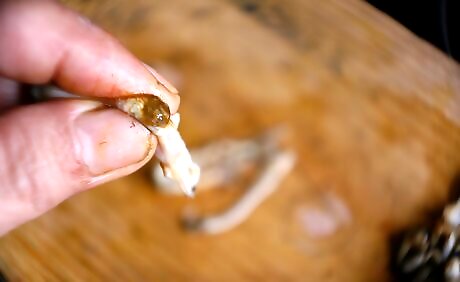
Squeeze near the digger (the foot) of the clam to reveal the stomach. Look for the dark sack-like part of your clam, which is the stomach. Press the meat below the stomach to make it easier to cut it away. Use your knife to remove the stomach, which may take several passes with your blade. Rinse the area to remove the gunk that seeps out. Continue to cut and rinse until all of the dark stomach sludge is gone.
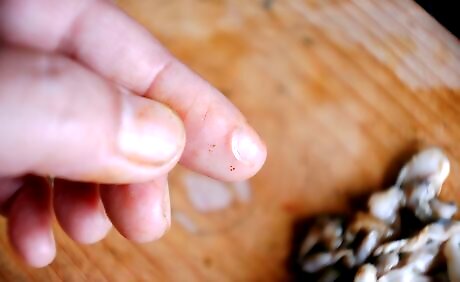
Locate and remove the clear rod that is inside the clam. Razor clams contain a crystalline style that allows them to break up their food, and you must remove it before eating the meat. While you’re cutting away the stomach, you should see the rod slide from inside the clam. If it doesn’t come away on it’s own, press the clam to push it out, then remove it with your fingers. Don’t mistake the crystalline style for a worm. It’s a natural part of the clam. It will look like a piece of plastic.
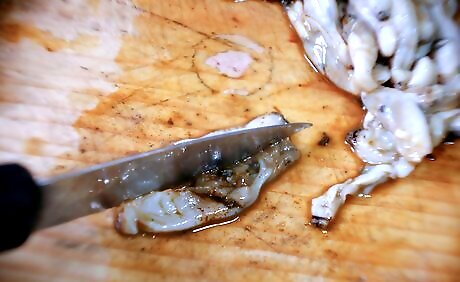
Slice the digger (the foot) and lay it open. The digger looks like a long rectangular piece that extends from around the center of your clam. You can choose to first cut it away from the rest of the meat or to leave it attached for cooking, depending on your personal preferences or the directions in your recipe.
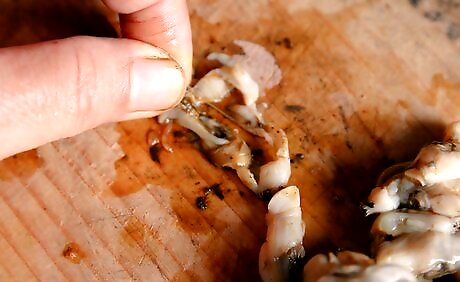
Pull out the intestines. Inside the foot you will see what looks like dark sludge. These are the intestines, which need to be cleared away. You can pluck them out or run your knife beneath them. Rinse the area until all you see is clean, white clam meat.
Preparing Your Clams for Cooking
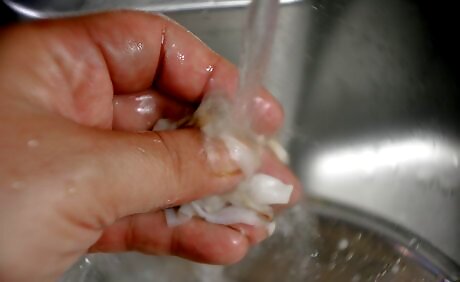
Hold each clam under running water. Once you’ve cut away all of the innards, you’ll want to give your clams a final rinse. For best results, rinse them individually under your tap. Allow each clam a few seconds under the water.
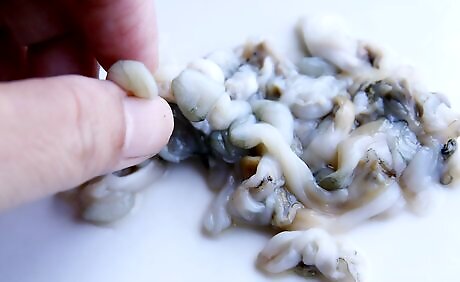
Place the clams into a clean dish. As you finish washing each clam, transfer it into your preparation dish. Continue until all of the clams are clean.
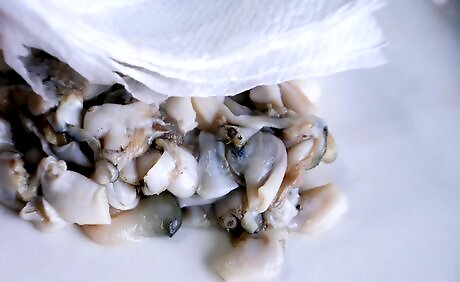
Drain away any excess water. After you’re done washing the clams, drain off any water that has accumulated in your dish.
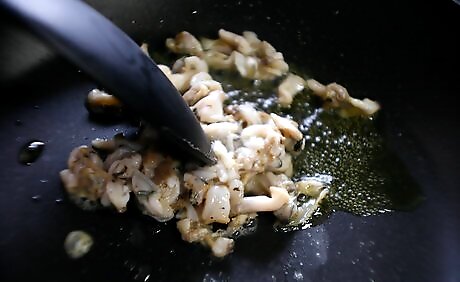
Cook or store your clams. Proceed with your recipe or freeze your clams for later. You can always prepare part of the batch and save the rest. If you want to freeze your clams, place them in a storage bag or container. Add a little water before putting it in the freezer.

















Comments
0 comment